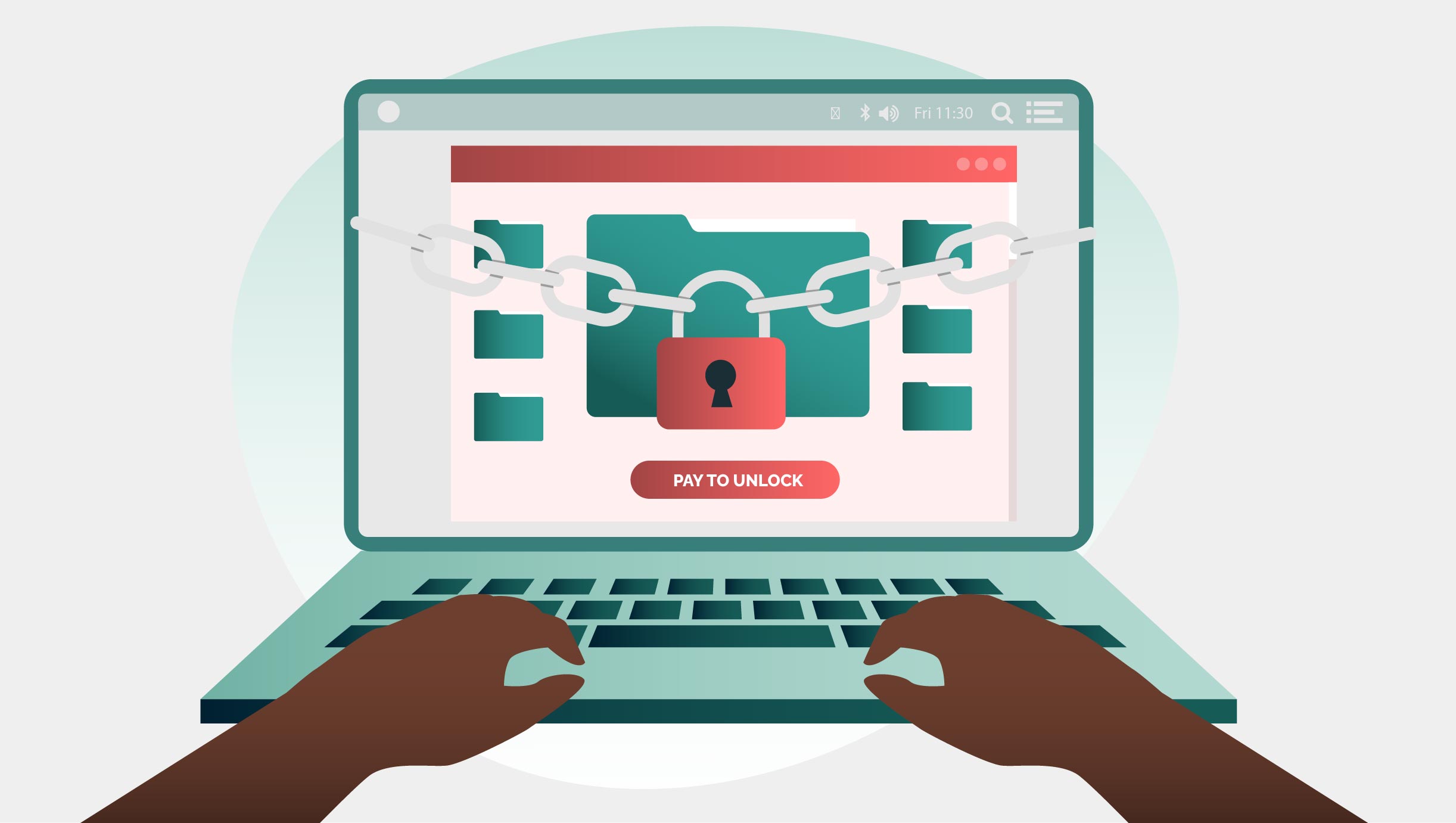Ransomware’s the gift that keeps on giving (headaches), but here’s a remedy
Ransomware is a real pain. No sane cybersecurity professional would say otherwise. But most people—yes, even plenty of cyber professionals—struggle to take into account the impact it can have on organizations.
And, spoiler alert: It’s a big one. And sadly, it’s not going away any time soon.
That’s why it’s crucial to get your people up to speed on how to handle ransomware attacks.
That’s right. No matter what the Avast lady tells you, preventing ransomware attacks isn’t just about having the latest update.
It’s about understanding human behavior and how to nudge people in the right direction.
That’s why our human-focused approach is a massive benefit for organizations like yours.
And it’s why we’ve put together “The ultimate people-centric webinar on ransomware prevention”.
But anyway, back to this post. We’re about to dive into the risky realities of ransomware and talk about how you can help your people handle the danger.
So, let’s get started, shall we?
Know your enemy
The first thing you need everyone to understand is this.
There are countless types of ransomware out there. And they all have their own special way of causing complete chaos.
It’s like a choose-your-own-adventure, but with way higher stakes.
Ask yourself, do your people know about the most common attack vectors? They need to be on guard when it comes to phishing emails, unsecured remote desktop connections, and vulnerabilities in software.
And they need to know that just because they work for a big-shot company, it doesn’t mean they’re immune. So you might like to tell them a story, like the ones below.
Wrong turn: Garmin gets griefed
In July 2020, Garmin, the GPS and fitness device company, fell victim to a ransomware attack that left them stranded for days.
The attack, reportedly orchestrated by the Evil Corp cybercrime group, scrambled Garmin’s systems and data, causing widespread outages of their online services.
The attackers demanded a hefty ransom of $10 million in exchange for the decryption key to restore the systems.
While Garmin wouldn’t comment on whether they’d paid the ransom, they did eventually find their way back on track after several days of disruption.
Honda left snake-bitten by ransomware attack
In June 2020, Honda was hit by a ransomware attack that affected its global operations.
The SNAKE ransomware group was believed to be the culprit behind the attack, which disrupted Honda’s production lines and supply chains.
The attackers demanded a ransom payment in exchange for the decryption key, but Honda reportedly shunned their demands. Instead, the company relied on backups and other recovery methods to restore their systems.
The incident highlighted the importance of having proper backup and recovery measures in place to mitigate the impact of ransomware attacks.
These incidents paint a gloomy picture of the significant impact that ransomware attacks can have on organizations of any size or industry.
Cybercriminals are becoming increasingly sophisticated in their tactics. They love developing ever more advanced malware and social engineering techniques. How else are they going to bypass security measures and target vulnerable systems?
It’s clear that you can’t afford not to have robust cybersecurity measures in place. And you 100 percent cannot afford to miss out on the next thing…
Prevention is key, but a response plan is critical
So, now everyone knows about ransomware and the havoc it can wreak. But how can you all stop it from happening?
It starts with a team effort.
Cybersecurity teams need to work together with everyone in the organization to prevent, detect, and respond to ransomware attacks.
To deal with the risks of ransomware attacks, you know to keep your software updated, use security solutions, and back up files.
But the annoying reality is: Even with these measures in place, there’s still a chance of falling victim to a ransomware attack.
That’s why it’s crucial to have a tested and refined response plan in place. If you’re thinking, “We’ll just deal with it if it happens,” then you’re already behind.
And trust us, you don’t want to be caught off guard during a live attack.
When desk becomes dojo
Listen up, because this part is crucial.
At CybSafe we’re tirelessly putting the message out there about healthy cybersecurity culture being essential.
And it is.
And: When your people are on the front lines of the battle against ransomware, they need knowledge too.
So if they haven’t been trained on how to spot and handle an attack, then you’re in big trouble.
That’s why a solid ransomware awareness program is a must. And no, a boring PowerPoint presentation isn’t going to cut it.
An effective security and awareness program should feature simulated phishing attacks, regular training sessions, and even gamification to boost engagement.
You can probably hear your CFO already, saying, “Ugh, this is going to take up so much time and money.”
But remind them how much it’ll cost you if you fall victim to a ransomware attack.
Get prepared, get plan-tasic
Alright, you’ve got your prevention methods in place and your people are up to speed.
But what happens if the worst-case scenario becomes a reality?
That’s where your ransomware response plan comes into play. And trust us, this isn’t something you want to be figuring out on the fly.
Your plan should include things like incident response procedures, communication protocols, and recovery steps. And don’t forget to test and refine your plan regularly.

Is ransomware insurance worth it?
So, you’re thinking about getting ransomware insurance? Good for you—you’re already ahead of the game. But before you sign on the dotted line, there are a few things you should consider.
First of all, don’t assume that all ransomware insurance policies are created equal. Some may cover more than others, so make sure you read the fine print. And speaking of fine print, make sure you understand the policy’s limits and exclusions. You don’t want to find out after the fact that you’re not actually covered.
Another thing to consider is whether the insurance company has experience dealing with ransomware attacks. Do they have a dedicated team for this kind of thing? If not, you might want to look elsewhere.
It’s also a good idea to get a sense of how the insurance company handles claims. Are they responsive and easy to work with, or do they drag their feet? You want to make sure that if you ever do need to make a claim, the process is as painless as possible.
And finally, don’t forget to consider the cost. Ransomware insurance can be expensive, so make sure you’re getting the best bang for your buck.
What else?
Look, make no mistake, ransomware is a major annoyance. But you’re in the perfect position to play a heroic role in its defeat.
You just need to give your people the right tools.
With the right knowledge, awareness, and action, your people can prevent and mitigate ransomware’s impact on your organization.
We’ve covered some vital components above, but the work doesn’t stop here.
It’s important for everyone in your organization to continue staying informed, keeping their guard up, and working together to prevent and respond to ransomware attacks.
Want to learn more about the finer points of preventing and mitigating ransomware risks? Register for “The ultimate people-centric webinar on ransomware prevention”.









